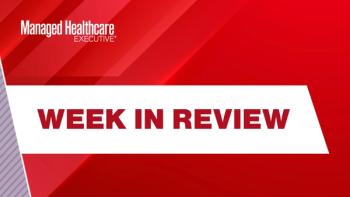
How Value-based Care Changes the Provider Staffing Model
Why new payment models require new staffing considerations.
With more health systems looking to partner with physicians for advanced comprehensive care, primary care is one of the most sought-after specialties for evolving value-based care initiatives. As more value-based care models begin to target primary-care and private practices-and the trend away from fee-for-service progresses-providers need to be prepared.
In a recent
However, in order for the transition to this model to be profitable, practices need to take the appropriate steps to support the shift. This includes being properly staffed.
Traditionally, in a fee-for-service revenue model, the medical-assistant model for staffing has been the most cost-effective option, according to a recent
However, while effective for practices that are fee-for-service revenue based, this staffing approach may not be able to support the new models designed to provide comprehensive care. As practices transition into value-based care, a higher skill mix becomes crucial for success, in order to support a more coordinated model of care for patients. This coordination is critical, as value-based arrangements require a combination of technical, clinical, and administrative aspects.
Related:
For example, patient education, clinical care planning, and treatment implementation will all need to be incorporated under the value-based payment model. Such a comprehensive care package could include the work of RNs, pharmacists, behavioral health providers, or more.
“Primary care is one of the highest priorities for health systems as they move to value-based care and payment models,” Chris Smedley, vice president of Physician Enterprise Services at Premier said in a statement. “However, many primary care clinics are still operating under fee-for-service and lack the insights necessary to effectively adjust their operating models as they transition to value.”
While staffing with a higher skill mix may seem less cost-effective at first glance, providers will need this variation to provide the successful outcomes necessary for revenue under the value-based models. For the 22% of primary-care providers currently operating on a medical assistant-only model, this presents some complications.
These practices will need to integrate more specialized skill sets into their practices, such as registered nurses, social workers, pharmacy support staff, or other licensed professionals. These changes will be an investment; that this model will be more expensive, particularly at the start, than a medical assistant-only model goes without saying.
However, in the long run, these investments into an efficient staffing model will pay off, particularly as practices begin to become eligible for incentive payments or other value-based reimbursements.
“As the industry moves toward value, participating in risk-based models will become a more viable option for many to ensure financial success,” Smedley said. “The key is to appropriately evolve staffing models as organizations shift to managing the health of their populations.”
Laura Dorr is a freelance writer based outside of Cleveland, Ohio. She has served as a writer and editor for a variety of publications and websites across the medical, dental, sports, education, and nonprofit industries.
Newsletter
Get the latest industry news, event updates, and more from Managed healthcare Executive.





















































